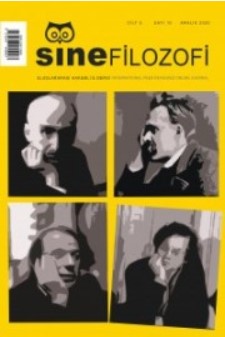Faces and Surfaces in the Landscape of Pasolini’s ‘Palestina’
Faces and Surfaces in the Landscape of Pasolini’s ‘Palestina’
Author(s): Işıl Baysan SerimSubject(s): Maps / Cartography, Environmental interactions, Post-War period (1950 - 1989), Film / Cinema / Cinematography, History of Art
Published by: Serdar Öztürk
Keywords: Pasolini; documentary; landscape; spatio-temporal; territorial assemblage; diagram;
Summary/Abstract: Hardly known that Pier Paolo Pasolini has created a landscape trilogy through the location-hunting documentaries in his oeuvre. The first of these works is also the one that comprises the spine of this essay, Sopralluoghi in Palestina (Locations in Palestine, 1963), the second one is Appunti per un film sull’India (Notes for a Film on India, 1968), and finally, Appunti per un’Orestiade Africana (Notes for an African Oresteia, 1969/70). The use of historically and culturally layered landscapes from varying perspectives makes his documentaries a “territorial assemblage” in which any number of things or pieces of things has gathered. Following the footprints of Pier Paolo Pasolini, this article aims to explore the film, namely Sopralluoghi in Palestina (Locations in Palestine, 1963) and to present different articulation of space, landscape, territory and place. Particularly, the narrative information, pure observation and his self-experience of landscape are spliced together in mythical as well as historical shots which have been incandescently defined by his poetic realism. Film, indeed, not only does enable to mediate some Deleuzoguattarian concepts penetrating from philosophy to cinema, but also does open new paths for “thinking differently” on the complexity of space. This article, by delving into the real-time shots of the film will problematize the spatial-temporal dimensions are involved in the cartography formed by heterogeneous forces or/and multiplicities defined by “zones of indiscernibility” in the landscape. In this way, I target to reveal its diagrammatic formation which provide the viewer thinking through words and images, nature and culture, faces and surfaces.
Journal: SineFilozofi
- Issue Year: 5/2020
- Issue No: 10
- Page Range: 620-636
- Page Count: 17
- Language: English

